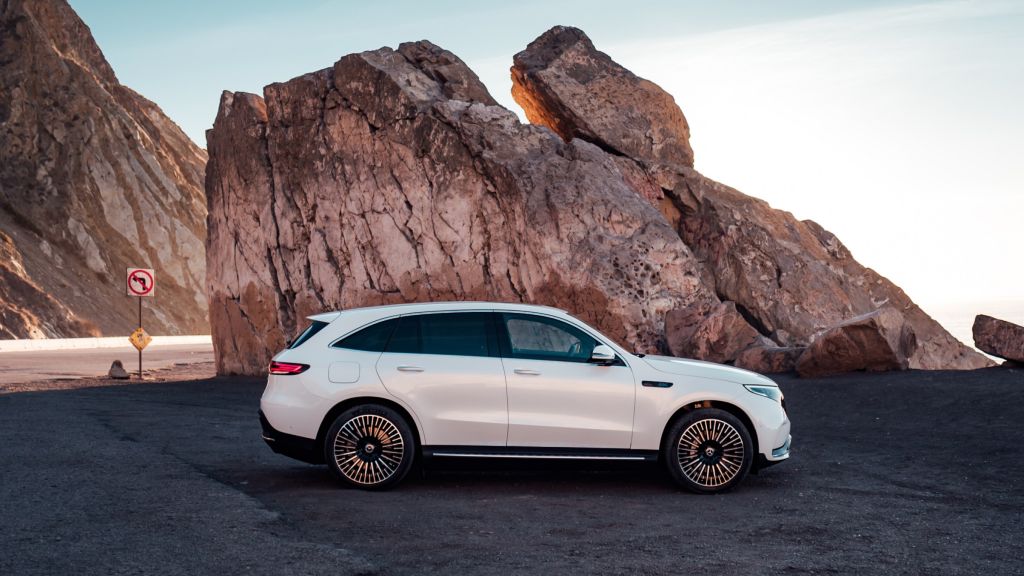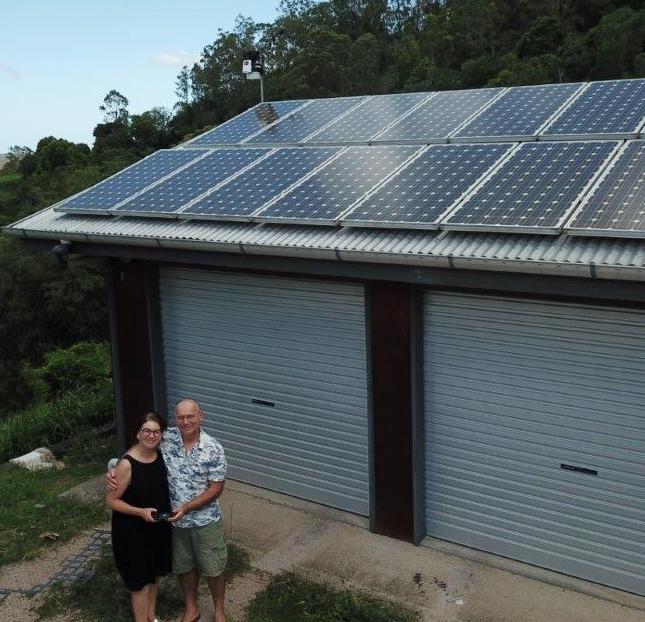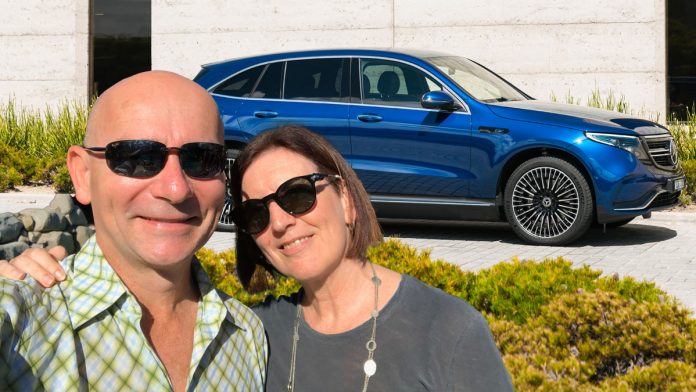Mercedes-Benz’s first fully electric sports vehicle, which was named Wheels Car of the Year, is now charging up on the Sunshine Coast.
Despite its $139,700 price tag (plus on-road costs), five of the battery-powered luxury cars have already been sold on the Coast.
The EQC is the latest in a flurry of electric cars hitting the market in Australia amid predictions EVs will soon become more affordable for the everyday person.
The top-end Mercedes runs entirely on battery and has a driving range of more than 400km before it needs to be recharged.

Michael and Lisa Domagala have never owned a Mercedes before but their passion for sustainable living spurred them to be at the forefront of electric driving in Australia.
After test-driving a few – including the Tesla and Jaguar I-Pace, they settled on the Mercedes EQC because of its driveability and finer finishes.
The couple live off-the-grid in Kiamba and will charge their Mercedes from the power produced by their solar panel system, meaning their car will be completely run on clean energy.
“We feel like we are being pioneers, someone has to be first to prove this works and we’re happy to do that,” Lisa said.
As well as looking forward to having “a really nice car”, the Domagalas are passionate about not being part of the problem created by our reliance on carbon-emitting petrol vehicles.

They want to dispel commonly described fears people have of “range anxiety” and show it is possible to plan and travel afar without running out of energy.
Join an independent local news revolution by subscribing to receive our FREE daily news feed: Go to SUBSCRIBE at top of this article to register
Mercedes’ parent company Daimler, the world’s largest luxury car maker, has committed to accelerating its transition to electric and is investing 10 billion euros to expand its electric fleet.
The company has also set a target of producing zero emissions across its entire production chain by 2032.
Mercedes-Benz Sunshine Coast sales manager Andrew Laing said people living on the Coast had a progressive attitude towards sustainable living which fitted with Daimler’s ambitions.
He said the Mercedes EQC combined decades of car-building knowledge with modern-day technology to produce a vehicle that had grunt and luxury finishes.
The company also offers an EQ Power Plug-in Hybrid range of vehicles which combine petrol with a high voltage battery and electric motor – combining “the best of both worlds”.
Mr Laing said Daimler was leading the world towards a driving future that was no longer reliant on fossil fuels.
He said a total of 12 Mercedes-Benz vehicles with some form of electric – whether 100 per cent or hybrid – had been sold on the Coast.
Despite the public’s interest in green cars, the Electric Vehicle Council says Australia is lagging behind most comparable developed nations, mainly because of a lack of government support.
In 2019, there were 6,718 EVs sold in Australia, a 203 per cent increase on the year before but that represented just 0.6 per cent of car sales.
That compares to 3.8 per cent of sales in Europe and 4.7 per cent of sales in China.
Norway leads the world, and its decision to stop selling fossil-fuel cars by 2025 has led to rapid uptake of electric vehicles.
Plug-in electric cars accounted for eight in 10 cars sales in Norway in October this year.
Australia has 21 models, according to the Electric Vehicle Council, with eight priced under $65,000 such as the Nissan Leaf, Hyundai Iconiq and Mitsubishi Outlander PHEV.
Six more models are expected to arrive on our shores before the end of next year, including two
priced below $50,000.
Queensland’s Bruce Highway has been activated as an ‘electric superway highway’ – the world’s longest in a single state – with charging stations from the Coolangatta to Cairns including two on the Sunshine Coast – at Forest Glen and Cooroy.
The Sunshine Coast also has more than 30 recharging stations scattered throughout the region from coast to hinterland.





